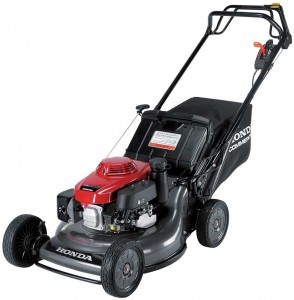 To get a quality finish and a healthy lawn, your mower needs to be able to make a clean cut across the grass as it mows. This guide will walk you through inspecting and sharpening your mower’s blade to ensure your mower will slice through blades of grass instead of bruising and breaking them.
To get a quality finish and a healthy lawn, your mower needs to be able to make a clean cut across the grass as it mows. This guide will walk you through inspecting and sharpening your mower’s blade to ensure your mower will slice through blades of grass instead of bruising and breaking them.
Removing the Blade
1. Disconnect the spark plug wire to prevent an accidental start.
2. Tip the lawn mower up on its side so that the carburetor is facing up to prevent flooding.
3. Mark the side of the blade facing out with a permanent marker or some spray paint. This way you’ll know which way the blade will need to be installed after sharpening.
4. Unbolt the blades. On some models, including all Twin Blade mowers, there are two bolts that hold the blade onto the engine shaft. Remove these bolts, but do not loosen the smaller center bolt. If the blade wants to spin, wedge a piece of wood between the blade and the deck.
5. Remove the blade, paying attention to the order of any washers or other fittings on the mounting bolts.
When to Get a New Blade
Now that you have access to the blade, inspect it for the following signs of wear:
- The trailing edge of the blade is thin.
- The blade is bent.
- The cutting edge is cracked or deeply dented.
If you see any of these signs of wear, the blade should be replaced. The life of a mower’s blades can vary significantly depending on local mowing conditions, so there’s no set interval for replacement.
Sharpening
Blades can be sharpened using a bench grinder or clamped into a vise and sharpened using a wheel or file. Blades are made of mild steel and can be ruined by overheating: if you’re using a motorized sharpening tool, let the blade cool a few seconds between passes.
Always sharpen the top side of the cutting edge. Your mower blade only needs to be as sharp as a butter knife to be effective.
Balancing
Once the blade has been sharpened, it needs to be checked for balance: an imbalanced blade will cause harsh vibrations that are hard on your mower’s engine and on the person operating the mower. Blade balancers are available, or you can hang the blade on a nail and see if it tilts in either direction. File a little metal off of the heavier (lower) side and recheck the balance. Once the blade sits evenly on the nail or balancer, it can be reinstalled.
Installation
Before you put the blades back on the mower, you may want to take some time to remove any grass clippings that have gathered on the underside of the deck. A hose or pressure washer should be able to remove most matted grass, while a putty knife can be used for tough spots.
Reinstalling the blade is done in the opposite order of removal. Make sure any washers are installed in the correct order, and tighten the blade bolts to the torque specified in your mower’s owner’s manual. When installing blades on a Twin Blade mower, the blade with the smaller edges goes on first, followed by the blade with the winged edges. Both blades should tilt downward.
Where to Get New Blades for Your Honda Lawn Mower
www.hondalawnparts.com is a certified Honda Small Engine Equipment dealer. We carry everything you need for your mower from blades to engine blocks, and we can ship your order to any address in the U.S. and Canada. Even if you don’t need a new blade right now, having a spare can keep your mower in service when the current blade needs repair or replacement.
